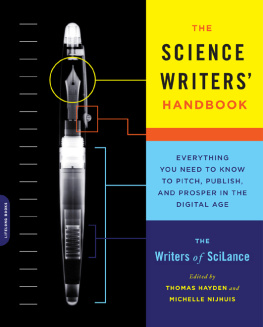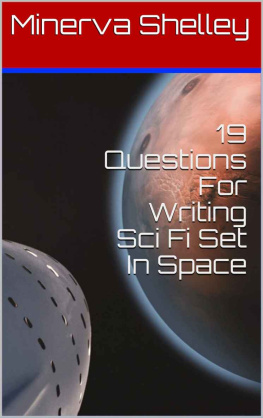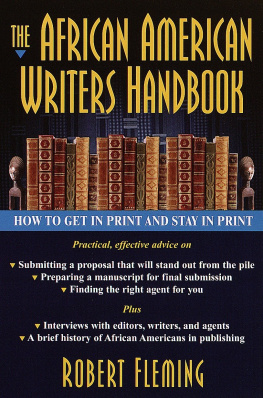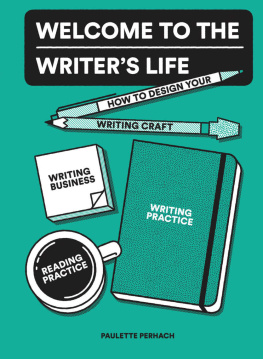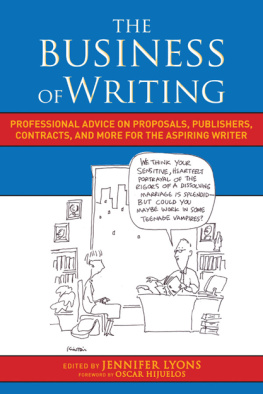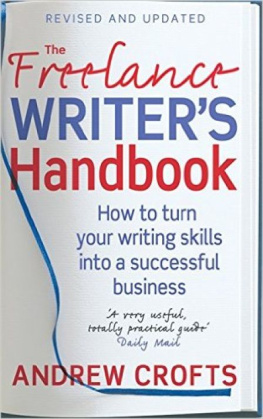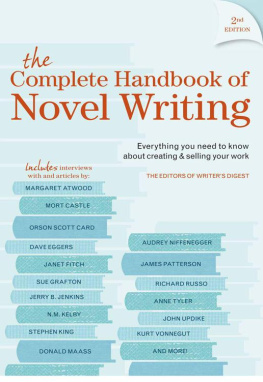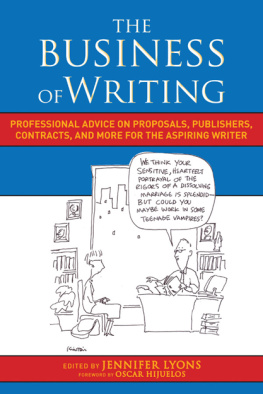PRAISE FOR
THE SCIENCE WRITERS HANDBOOK:
At its best, science writing weaves together quests for knowledge, personal struggles, rivalry and conflicts, and moments of great insight to reveal how science works and why it matters. This book shows you how to write science stories that count. Siri Carpenter, senior editor, Discover Magazine, and cofounder of The Open Notebook
In a world growing ever more complex, people with a talent to explain are in demand. Nowhere is this truer than in science writinga field that is entering a vibrant new age. Whether youre a beginner or a veteran, these reports from the frontline provide an invaluable guide. George Johnson, author of The Cancer Chronicles: Unlocking Medicines Deepest Mystery and cofounder and director of the Santa Fe Science Writing Workshop
What happens when more than 30 freelance writers come together to build something? You get a smart, compelling, and, most of all, helpful book filled with tips, ideas, and insights that only 300+ years of combined experience could make possible. It doesnt get much better than freelancers helping freelancers. Sara Horowitz, founder of the Freelancers Union and author of The Freelancers Bible
Science is replete with moving, profound and important stories. But the art and craft of telling those stories is complex: it takes more than desire to become a science writer. The Science Writers Handbook is a fabulous book: it uses real writers experiences to show those who want to tell science stories how to do so. Jay Ingram, cofounder and chair of the Banff Centre Science Communications Program and author of Fatal Flaws: How a Misfolded Protein Baffled Scientists and Changed the Way We Look at the Brain
JILL U ADAMS MONYA BAKER JENNIFER CUTRARO HELEN FIELDS DOUGLAS FOX ROBERT FREDERICK ALISON FROMME EMILY GERTZ VIRGINIA GEWIN LIZA GROSS THOMAS HAYDEN ADAM HINTERTHUER HANNAH HOAG EMMA MARRIS JESSICA MARSHALL AMANDA MASCARELLI ROBIN MEJIA SUSAN MORAN BRYN NELSON MICHELLE NIJHUIS STEPHEN ORNES KENDALL POWELL HILLARY ROSNER ANNE SASSO MARK SCHROPE EMILY SOHN GISELA TELIS BRIAN VASTAG ANDREAS VON BUBNOFF CAMERON WALKER SARAH WEBB

The
Writers of SciLance
Edited by
Thomas Hayden
and Michelle Nijhuis

DA CAPO LIFELONG BOOKS
A Member of the Perseus Books Group
Copyright 2013 by SciLance Writing Group, LLC
All rights reserved. No part of this publication may be reproduced, stored in a retrieval system, or transmitted, in any form or by any means, electronic, mechanical, photocopying, recording, or otherwise, without the prior written permission of the publisher. For information, address Da Capo Press, 44 Farnsworth Street, 3rd Floor, Boston, MA 02210.
Designed by Cynthia Young
Library of Congress Cataloging-in-Publication Data
The science writers handbook : everything you need to know to pitch, publish, and prosper in the digital age / the writers of SciLance, edited by Thomas Hayden, Michelle Nijhuis.First Da Capo Press edition.
pages cm
Includes bibliographical references and index.
ISBN 978-0-7382-1657-7 (e-book)
1. Technical writing. I. Hayden, Thomas C., editor of compilation. II. Nijhuis, Michelle, editor of compilation. III. SciLance (Firm)
T11.S35 2013
808.06'65dc23
2013000128
Published by Da Capo Press
A Member of the Perseus Books Group
www.dacapopress.com
This project was funded in part by a grant from the National Association of Science Writers. Reference to any specific commercial product, process, or service does not necessarily constitute or imply its endorsement of or recommendation by the National Association of Science Writers, and any views and opinions expressed herein do not necessarily reflect those of the National Association of Science Writers.
Da Capo Press books are available at special discounts for bulk purchases in the U.S. by corporations, institutions, and other organizations. For more information, please contact the Special Markets Department at the Perseus Books Group, 2300 Chestnut Street, Suite 200, Philadelphia, PA, 19103, or call (800) 810-4145, ext. 5000, or e-mail .
10 9 8 7 6 5 4 3 2 1

CONTENTS

By Kendall Powell
Ten years ago, I was finishing up an internship at Nature in Washington, D.C., and preparing to begin a career as an independent science writer. I was terrified. How would I find assignments? Would I be able to make any money at all? As a freelancer working from home, how would I stay motivatedand stay away from daytime TV?
Two of my Nature editors gave me sage and calming advice. Colin Macilwain began: If you can turn in copy on time and to length, and know how to form even a decently written paragraph, then youll be... He paused, and Paul Smaglik finished his thought: Golden.
I thought they were just being polite, but they were right. After a couple of years, I had a stream of assignments from a half dozen steady clients, and my science writing career was humming along nicely.
But my inner social butterfly suffered. When I left Nature, I had moved in with my then-boyfriend in Colorado, a state where I knew exactly one individual: him. As a freelancer, it wasnt easy to make connections in a new place, and I found myself dashing outside to greet the mailman for small talk and befriending baristas at my local Starbucks.
Then, like a home-birthed baby, SciLance was born in a bathtub. Okay, it wasnt that messy or dramatic, but still, its a moment Im not likely to forget.
The idea for an online community of writers first came to me at the 2005 National Association of Science Writers meeting in Pittsburgh. I was soaking my conference-sore feet with three other writers in a huge jet-tub in the hotels honeymoon suite (someones reservation had been lost, and the suite was the hotels apology). We sat around the edge, pants rolled up, chatting over the pizza and wine we had brought upstairs from the bar.
I complained that while I met so many interesting colleagues at conferences, and always loved talking shop with them, it was difficult to keep up that camaraderie once we headed home. Online groups were too impersonal, or too public, or too prone to internal conflict. But what about a smaller, more intimate group, I wondered? Could that serve as a virtual jet-tub?
A month later I created an online group known as SciLance and invited about ten colleagues to join me in an experiment. I wanted to create a reasonably confidential group where members could share advice on the business and craft of science writing. One e-mail at a time, we began to troubleshoot one anothers problems, suggesting sources, editors, and solutions to late paychecks.
Eight years later, the group has grown to a stable thirty-five members, located across the US and Canada, and the conversation is still lively. We now share not only practical advice from our combined three hundred years of experience, but also support and inspiration, encouraging one another to finish that pitch, apply for that fellowship, or take that long-overdue vacation. Were proud that members of SciLance have published in the
Next page
